Marine Cyanobacteria and Microalgae Metabolites-A Rich Source of Potential Anticancer Drugs
- PMID: 32961827
- PMCID: PMC7551136
- DOI: 10.3390/md18090476
Marine Cyanobacteria and Microalgae Metabolites-A Rich Source of Potential Anticancer Drugs
Abstract
Cancer is at present one of the utmost deadly diseases worldwide. Past efforts in cancer research have focused on natural medicinal products. Over the past decades, a great deal of initiatives was invested towards isolating and identifying new marine metabolites via pharmaceutical companies, and research institutions in general. Secondary marine metabolites are looked at as a favorable source of potentially new pharmaceutically active compounds, having a vast structural diversity and diverse biological activities; therefore, this is an astonishing source of potentially new anticancer therapy. This review contains an extensive critical discussion on the potential of marine microbial compounds and marine microalgae metabolites as anticancer drugs, highlighting their chemical structure and exploring the underlying mechanisms of action. Current limitation, challenges, and future research pathways were also presented.
Keywords: cancer; clinical studies; in vitro; in vivo; marine; microalgae; microbes; prevention; therapy.
Conflict of interest statement
The authors declare no conflict of interest.
Figures

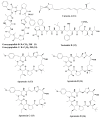
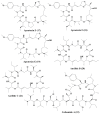
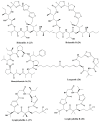

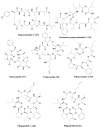

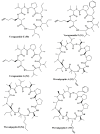
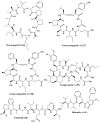
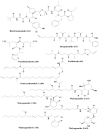











References
-
- World Health Organization . WHO Report on Cancer: Setting Priorities, Investing Wisely and Providing Care for All. World Health Organization; Geneva, Switzerland: 2020.
-
- Banerjee S., Bose S., Mandal S.C., Dawn S., Sahoo U., Ramadan M.A., Mandal S.K. Pharmacological Property of Pentacyclic Triterpenoids. Egypt J. Chem. 2019;62:13–35. doi: 10.21608/ejchem.2019.16055.1975. - DOI
Publication types
MeSH terms
Substances
LinkOut - more resources
Full Text Sources
Miscellaneous

